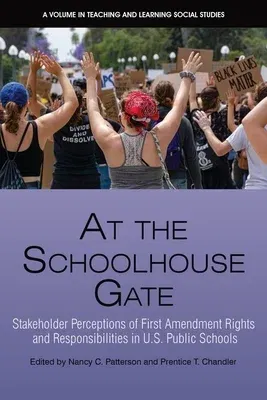The objective of this edited volume is to shed light upon K-12
perspectives of various school stakeholders in the current unique
context of increasing political polarization and heightened teacher and
student activism. It is grounded in academic freedom case law and the
majority of opinion of the Supreme Court in the Tinker v. Des Moines
Independent Community School District (1969) that held that certain
forms of expression are protected by the First Amendment. Justice Fortas
wrote in the majority opinion that "it can hardly be argued that either
students or teachers shed their constitutional rights to freedom of
speech or expression at the schoolhouse gate."
This volume is timely and instructive, as protections afforded by the
First Amendment are a topic of enduring concern, with such freedoms
requiring vigilant advocacy and protection from each generation. Paulo
Freire stated, "Citizenship is not obtained by chance: It is a
construction that, never finished, demands we fight for it" (1998, p.
90). There is confusion and much debate in and outside of schools about
how and when these and other rights described in the First Amendment may
or may not be limited, and the time is now to clarify the place of such
rights in public education.
At the Schoolhouse Gate is divided into three sections: Foundations,
Case Studies of Rights in Schools, and Choices to Act. The "Foundations"
section presents the case law pertaining to the rights of both teachers
and students, setting the tone for what presently is permissible and
chronicling the ongoing struggle with defining rights and
responsibilities in schools. In "Case Studies of Rights in Schools,"
various authors examine teacher and student interactions with rights and
responsibilities in schools, including the interest of students in
participating with their teachers in the democratic experiment of
schooling, the promise of student-led conferences, a new teacher's
success with democratizing her classroom, and student views of news and
technology. "Choices to Act" includes a portrait of teacher activism
during the Oklahoma Walkout, a general counsel's advice to teachers for
availing themselves of their rights, a story of a civic education
curriculum generating student agency, and vignettes of two public high
school students who took action in their schools and communities.


